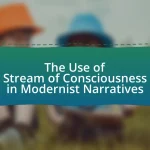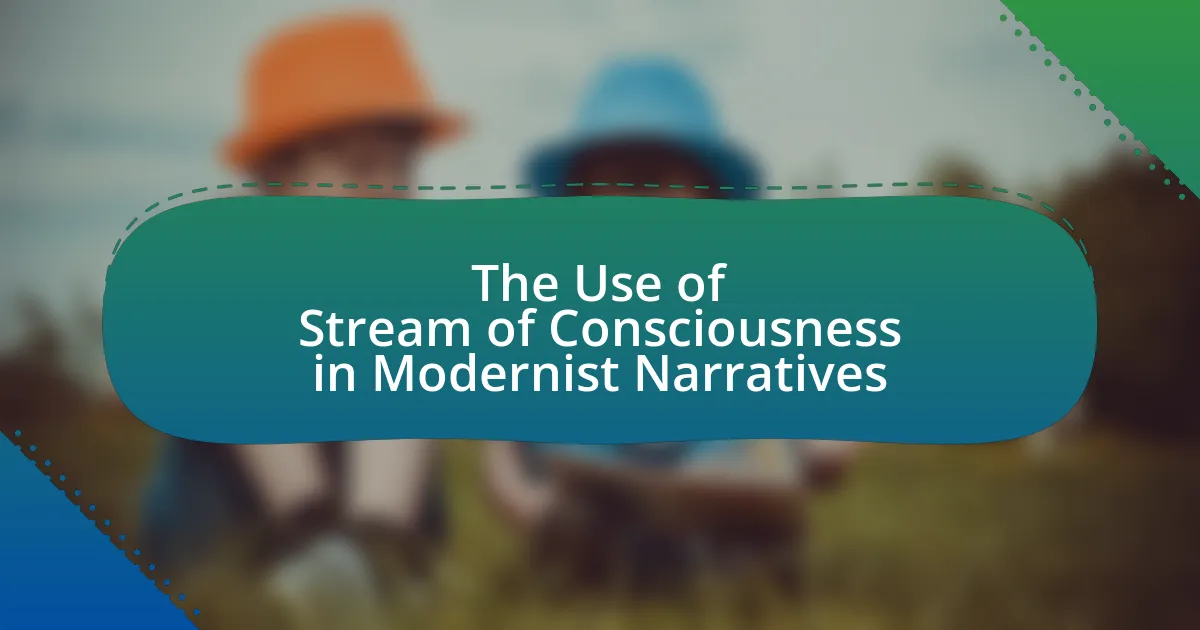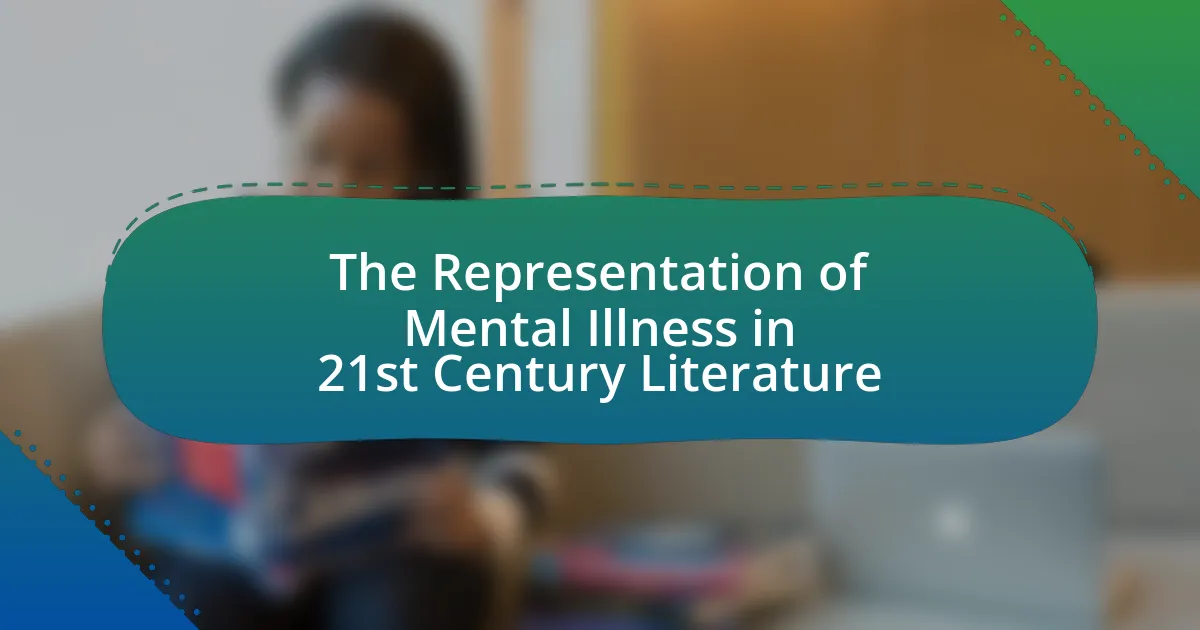The article examines the significance of intertextuality in Shakespeare’s plays, highlighting how his works reference and respond to classical literature, historical sources, and contemporary texts. It discusses the various manifestations of intertextuality, including allusions, adaptations, and parodies, and their impact on themes, character development, and audience interpretation. Key texts influencing Shakespeare, such as “The Decameron” and works by Plutarch, are identified, illustrating how these intertextual connections enrich the narratives and enhance the emotional and intellectual engagement of audiences. The article also addresses the challenges modern readers face in understanding these references and offers strategies for educators and scholars to analyze and appreciate intertextuality in Shakespeare’s oeuvre.
What is Intertextuality in Shakespeare’s Plays?
Intertextuality in Shakespeare’s plays refers to the way his works reference, incorporate, and respond to other texts, including classical literature, historical sources, and contemporary works. This technique enriches the themes and characters in his plays, allowing for deeper interpretations and connections. For example, “Hamlet” draws on elements from earlier texts like “Amleth,” a tale from the Gesta Danorum, showcasing how Shakespeare reinterprets existing narratives to explore complex human emotions and moral dilemmas. This intertextual approach not only highlights Shakespeare’s literary influences but also invites audiences to engage with the broader cultural and literary context of his time.
How does intertextuality manifest in Shakespeare’s works?
Intertextuality in Shakespeare’s works manifests through the incorporation of themes, characters, and plots from classical literature, historical texts, and contemporary sources. For example, Shakespeare frequently drew upon Roman and Greek mythology, as seen in “Julius Caesar,” which reflects Plutarch’s “Lives,” and “A Midsummer Night’s Dream,” which includes references to Ovid’s “Metamorphoses.” Additionally, his plays often engage with existing narratives, such as the use of the tragic love story in “Romeo and Juliet,” which parallels Arthur Brooke’s poem “The Tragical History of Romeus and Juliet.” This intertextual dialogue enriches the texts, allowing for deeper exploration of human experience and societal issues, thereby demonstrating Shakespeare’s awareness of and engagement with the literary tradition of his time.
What are the key texts that influence Shakespeare’s plays?
Key texts that influence Shakespeare’s plays include “The Decameron” by Giovanni Boccaccio, “The Golden Ass” by Apuleius, and various works by Plutarch, particularly “Lives.” These texts provided narrative structures, themes, and character archetypes that Shakespeare adapted in his own works. For instance, “The Decameron” contributed to the plot of “All’s Well That Ends Well,” while Plutarch’s “Lives” served as a primary source for “Julius Caesar” and “Antony and Cleopatra.” The intertextual connections highlight Shakespeare’s engagement with existing literature, showcasing his ability to reinterpret and innovate upon established narratives.
How do references to classical literature appear in his works?
References to classical literature in Shakespeare’s works appear through allusions, themes, and character parallels. Shakespeare frequently draws from ancient texts, such as those by Homer, Virgil, and Ovid, to enrich his narratives and provide deeper meaning. For instance, in “Troilus and Cressida,” Shakespeare directly references the “Iliad,” showcasing the influence of Greek mythology and epic storytelling. Additionally, the character of Prospero in “The Tempest” reflects elements from Ovid’s “Metamorphoses,” particularly in the themes of transformation and magic. These intertextual connections not only enhance the complexity of Shakespeare’s characters but also invite audiences to engage with the broader literary tradition, demonstrating the enduring impact of classical literature on his work.
Why is intertextuality significant in understanding Shakespeare?
Intertextuality is significant in understanding Shakespeare because it reveals the interconnectedness of his works with other texts, enhancing the depth of interpretation. Shakespeare frequently alluded to classical literature, historical events, and contemporary works, which allows readers and audiences to grasp the cultural and literary context of his plays. For instance, his use of Roman history in “Julius Caesar” and references to biblical themes in “Hamlet” demonstrate how intertextuality enriches character motivations and thematic complexity. This interconnectedness not only provides insight into Shakespeare’s influences but also invites a broader exploration of the societal norms and literary conventions of his time, making his works more relatable and profound.
How does it enhance the themes within his plays?
Intertextuality enhances the themes within Shakespeare’s plays by creating deeper connections between texts, allowing for richer interpretations. For instance, references to classical literature and historical events in plays like “Hamlet” and “Julius Caesar” provide context that amplifies themes of power, betrayal, and mortality. The use of allusions to works such as Ovid’s “Metamorphoses” in “A Midsummer Night’s Dream” enriches the exploration of love and transformation, demonstrating how interconnected narratives can deepen thematic resonance. This layering of meaning through intertextuality invites audiences to engage with the text on multiple levels, fostering a more profound understanding of the human experience depicted in Shakespeare’s works.
What role does it play in character development?
Intertextuality plays a crucial role in character development by providing depth and context to characters through references to other texts. In Shakespeare’s plays, intertextuality allows characters to be understood in relation to existing literary and cultural narratives, enriching their motivations and conflicts. For example, the character of Hamlet is often analyzed through the lens of earlier works like “Amleth,” which informs his existential dilemmas and moral quandaries. This layering of texts not only enhances the audience’s understanding of the characters but also reflects the complexities of human experience, as seen in the multifaceted portrayals of love, ambition, and betrayal throughout Shakespeare’s oeuvre.
How does Intertextuality Affect the Interpretation of Shakespeare’s Plays?
Intertextuality significantly affects the interpretation of Shakespeare’s plays by creating layers of meaning through references to other texts, historical events, and cultural contexts. This interconnectedness allows audiences to draw parallels between Shakespeare’s work and earlier literary traditions, such as classical mythology or contemporary political issues, enriching the understanding of themes like power, love, and betrayal. For example, in “Hamlet,” the references to biblical texts and classical philosophy deepen the exploration of existential questions, illustrating how intertextuality can enhance character motivations and plot developments. Such references invite readers and viewers to engage in a dialogue with the text, leading to varied interpretations that reflect both the original context and contemporary perspectives.
What are the implications of intertextual references for audiences?
Intertextual references enhance audience engagement by creating layers of meaning and fostering deeper connections with the text. These references allow audiences to draw on their prior knowledge of other works, enriching their understanding and interpretation of the play. For instance, Shakespeare’s use of biblical allusions or classical mythology invites audiences to explore themes of morality, fate, and human nature, which resonate across different contexts. This intertextuality not only deepens the emotional impact but also encourages critical thinking, as audiences analyze the relationships between texts and their implications.
How do these references shape audience perceptions?
References in Shakespeare’s plays shape audience perceptions by creating connections to existing cultural, historical, and literary contexts. These intertextual references enhance the depth of the narrative, allowing audiences to draw parallels and derive meaning based on their prior knowledge. For instance, Shakespeare’s allusions to classical mythology or historical figures evoke specific emotions and ideas, influencing how audiences interpret characters and themes. This technique not only enriches the text but also engages the audience’s intellect, prompting them to consider broader societal implications and moral questions. By leveraging familiar references, Shakespeare effectively guides audience interpretations, making the plays resonate on multiple levels.
What challenges do they present for modern readers?
Shakespeare’s plays present several challenges for modern readers, primarily due to their complex language, historical context, and cultural references. The Elizabethan English used in these works can be difficult to understand, as it includes archaic vocabulary and intricate sentence structures that differ significantly from contemporary language. Additionally, the historical and social contexts of the plays, such as the norms and values of the 16th century, may not resonate with or be fully understood by today’s audiences. Furthermore, intertextual references to classical literature, biblical texts, and contemporary events require readers to possess a certain level of background knowledge to fully appreciate the depth and nuances of the plays. These factors collectively hinder modern readers’ ability to engage with and interpret Shakespeare’s works effectively.
How does intertextuality contribute to the richness of Shakespeare’s language?
Intertextuality significantly enhances the richness of Shakespeare’s language by creating layers of meaning through references to classical texts, historical events, and contemporary works. This technique allows Shakespeare to engage with existing literary traditions, enriching his characters and themes. For instance, in “Hamlet,” the allusions to biblical texts and classical philosophy deepen the exploration of existential themes, while references to contemporary politics provide social commentary. Such intertextual connections invite audiences to draw parallels and engage critically with the text, thereby amplifying the emotional and intellectual impact of his plays.
What linguistic techniques does Shakespeare employ to create intertextual connections?
Shakespeare employs various linguistic techniques such as allusion, metaphor, and wordplay to create intertextual connections. Allusion allows Shakespeare to reference classical texts, historical figures, or contemporary events, enriching the meaning of his works by drawing parallels and inviting comparisons. For instance, in “Julius Caesar,” the reference to the Roman Republic evokes themes of power and betrayal, linking it to contemporary political discourse of Shakespeare’s time. Metaphor serves to create deeper layers of meaning, as seen in “Hamlet,” where the metaphor of the “unweeded garden” reflects the state of Denmark and its moral decay, connecting to broader themes of corruption found in other literary works. Wordplay, including puns and double entendres, not only entertains but also connects to other texts by echoing similar themes or ideas, as demonstrated in “Much Ado About Nothing,” where the playful banter between characters often mirrors the complexities of love found in other literary traditions. These techniques collectively enhance the intertextual fabric of Shakespeare’s plays, allowing audiences to engage with multiple layers of meaning and context.
How does this language influence the emotional impact of his plays?
The language in Shakespeare’s plays profoundly influences their emotional impact by employing rich imagery, intricate wordplay, and varied rhetorical devices. This linguistic complexity allows for deep emotional resonance, as seen in the use of metaphors and similes that evoke vivid feelings and connections. For example, in “Romeo and Juliet,” the passionate language used in the balcony scene heightens the intensity of young love, making the audience feel the urgency and despair of their situation. Additionally, Shakespeare’s use of iambic pentameter creates a rhythmic flow that enhances the emotional weight of the dialogue, allowing characters’ feelings to be expressed with greater poignancy. This combination of linguistic techniques not only conveys the characters’ emotions effectively but also engages the audience on a deeper level, making the emotional experiences in his plays more impactful.
What are the Different Types of Intertextuality Found in Shakespeare’s Plays?
Shakespeare’s plays exhibit several types of intertextuality, including allusion, adaptation, and parody. Allusion is evident in references to classical texts, such as the frequent citations of Greek mythology and Roman history, which enrich the thematic depth of his works. Adaptation is seen in Shakespeare’s reworking of existing stories, such as the transformation of the Italian novella “Giovanni Boccaccio’s Decameron” into “The Taming of the Shrew.” Parody appears in plays like “Hamlet,” where Shakespeare critiques contemporary theatrical conventions and styles. These intertextual elements demonstrate Shakespeare’s engagement with prior literary works, enhancing the complexity and richness of his narratives.
What forms of intertextuality can be identified in his works?
Shakespeare’s works exhibit various forms of intertextuality, including allusion, adaptation, and parody. Allusion is evident in his frequent references to classical texts, such as the works of Ovid and Plutarch, which enrich the themes and characters in plays like “Romeo and Juliet” and “Julius Caesar.” Adaptation is showcased in his retelling of historical events and existing stories, as seen in “Hamlet,” which draws from earlier legends and narratives. Parody appears in his comedic plays, where he often mimics and critiques the conventions of contemporary literature and drama, such as in “A Midsummer Night’s Dream.” These forms of intertextuality not only enhance the depth of his narratives but also engage audiences by connecting them to a broader literary tradition.
How do allusions to historical events enhance the narrative?
Allusions to historical events enhance the narrative by providing depth and context, allowing audiences to draw connections between the text and real-world occurrences. For instance, in Shakespeare’s plays, references to events like the Roman civil wars or the English monarchy’s struggles enrich character motivations and themes, making them more relatable and impactful. These historical allusions serve as a framework for understanding the characters’ dilemmas and the societal issues they face, thereby creating a more immersive experience for the audience. By invoking shared historical knowledge, Shakespeare’s narratives resonate on multiple levels, reinforcing the emotional and intellectual engagement of the audience.
What role do quotations from other texts play in his storytelling?
Quotations from other texts in Shakespeare’s storytelling serve to enhance themes, establish character depth, and create intertextual connections that enrich the narrative. By incorporating lines from classical works, biblical texts, or contemporary literature, Shakespeare not only situates his plays within a broader literary context but also invites audiences to draw parallels and contrasts, deepening their understanding of the characters’ motivations and the overarching themes. For instance, in “Hamlet,” the use of references to works like “The Aeneid” underscores themes of fate and moral ambiguity, illustrating how intertextuality can amplify the emotional and intellectual engagement of the audience.
How can understanding intertextuality improve the study of Shakespeare?
Understanding intertextuality can significantly enhance the study of Shakespeare by revealing the connections between his works and other texts, thereby deepening literary analysis. Intertextuality allows scholars to explore how Shakespeare’s plays reference, adapt, or respond to classical literature, historical events, and contemporary societal issues, enriching the interpretation of themes and characters. For instance, Shakespeare’s use of biblical references and classical mythology in plays like “Hamlet” and “Romeo and Juliet” illustrates how these intertextual elements inform character motivations and plot developments. This interconnectedness not only provides insight into Shakespeare’s influences but also highlights the cultural and historical context of his time, making the study of his works more comprehensive and nuanced.
What strategies can scholars use to analyze intertextual references?
Scholars can analyze intertextual references by employing comparative analysis, thematic exploration, and historical contextualization. Comparative analysis involves examining texts side by side to identify similarities and differences in themes, characters, and narrative structures, which can reveal how Shakespeare’s works interact with other literary sources. Thematic exploration focuses on recurring motifs and ideas across texts, allowing scholars to understand how intertextuality shapes meaning and interpretation. Historical contextualization situates the texts within their cultural and temporal frameworks, providing insight into how contemporary events and literary traditions influenced Shakespeare’s writing. These strategies enable a deeper understanding of the significance of intertextuality in Shakespeare’s plays, illustrating how they engage with and respond to earlier works.
How can educators incorporate intertextuality into teaching Shakespeare?
Educators can incorporate intertextuality into teaching Shakespeare by drawing connections between his works and other literary texts, historical contexts, and contemporary media. This approach allows students to explore themes, character archetypes, and narrative structures that resonate across different works. For instance, comparing Shakespeare’s “Hamlet” with modern adaptations like “The Lion King” highlights the universal themes of revenge and moral conflict, making the material more relatable. Additionally, educators can utilize critical essays and analyses that reference other authors influenced by Shakespeare, such as T.S. Eliot or James Joyce, to deepen students’ understanding of intertextual relationships. By engaging students in discussions about these connections, educators foster critical thinking and enhance their appreciation of Shakespeare’s enduring impact on literature.
What practical tips can enhance the appreciation of intertextuality in Shakespeare’s Plays?
To enhance the appreciation of intertextuality in Shakespeare’s plays, readers should actively identify and analyze references to classical texts, historical events, and contemporary works. Engaging with these elements allows for a deeper understanding of themes and character motivations, as Shakespeare often drew upon sources like Roman literature and biblical texts. For instance, recognizing the influence of Ovid’s “Metamorphoses” in “A Midsummer Night’s Dream” reveals the play’s exploration of transformation and love. Additionally, participating in discussions or reading scholarly analyses can provide insights into the connections between Shakespeare’s works and other literary traditions, enriching the overall experience.




